8.6 /10 1 Votes8.6
Initial release 20 February 1999 (Japan) | 8.6/10 IMDb Written by Masashi Sogo | |||||||||||||||||||||||||||||||||
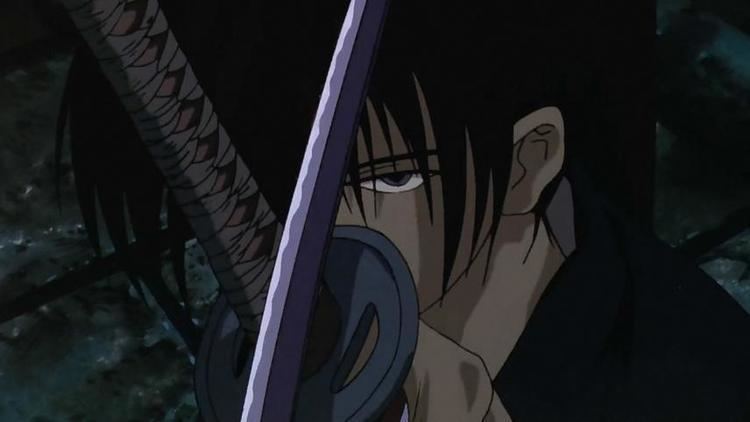 | ||||||||||||||||||||||||||||||||||
Genre Chanbara, Drama, Tragedy Produced by Yoshinori NarukeKazuki Noguchi Producers Katsunori Furihashi, Kazuki Noguchi, Yoshinori Naruke Cast Similar Samurai X: The Motion Picture, Big Wars, Rurouni Kenshin, Black Jack: The Movie, Rurouni Kenshin: Kyoto Infe | ||||||||||||||||||||||||||||||||||
Rurouni kenshin trust betrayal is majestic
Samurai X: Trust & Betrayal, known in Japan as Rurouni Kenshin: Tsuioku-hen (るろうに剣心 追憶編, Rurouni Kenshin: Recollection or Reminiscence), is a 1999 original video animation series directed by Kazuhiro Furuhashi, screenplay-written by Masashi Sogo, scored by Taku Iwasaki, and animated by Studio Deen. Based on the Rurouni Kenshin manga written and illustrated by Nobuhiro Watsuki, Trust & Betrayal chronicles the story of Himura Kenshin as the Hitokiri Battōsai during the final years of the Bakumatsu era while also revealing the origins of his cross-shaped scar and exploring his relationship with a woman named Yukishiro Tomoe.
Contents
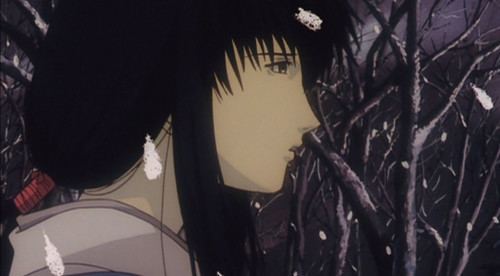
The OVA series was first licensed by ADV Films for VHS and DVD releases in North America and the United Kingdom, and by Madman Entertainment for releases in Australasia, under the title Samurai X: Trust & Betrayal. Trust & Betrayal was later collected into a two-hour feature-length motion picture with new animated sequences and released theatrically in Japan. In 2003, this feature-length motion picture was eventually released in North America on DVD as a director's cut by ADV Films. After ADV Films' closure, Aniplex of America began licensing the OVA series for Blu-ray Disc releases in North America under its original title: Rurouni Kenshin: Trust & Betrayal. It has received universal critical acclaim from anime critics, with praise directed towards the story, animation, art, music and Japanese voice acting.
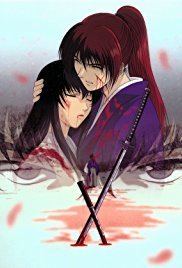
Plot
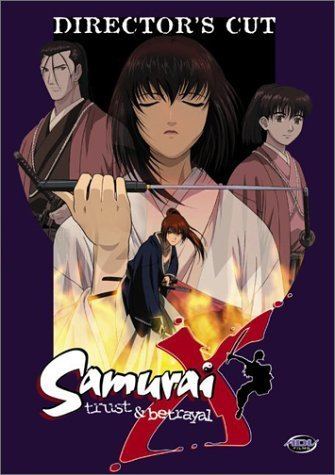
While a raid of bandits slay a group of travelers, a young boy named Shinta is saved from death by a passing swordsman. The swordsman, known as Hiko Seijūrō, is a master of the Hiten Mitsurugi, the strongest of all sword forms. Hiko takes Shinta as an apprentice and renames him "Kenshin", a name which he felt was more appropriate for a swordsman.

After years of training, Kenshin leaves his master, convinced that the only way to uphold the Hiten Mitsurugi's pledge to help the weak and innocent is to join the revolution poised to upend the Tokugawa shogunate. He joins the Choshu clan and soon works for their leader, Katsura Kogorō, as an assassin. Kenshin soon becomes a hardened killer, feared far and wide as the Hitokiri Battōsai. During a successful assassination, he kills a bodyguard named Kiyosato Akira. The encounter with Kiyosato leaves Kenshin with the first half of his cross-shaped scar. After killing a skilled assassin, Kenshin meets a woman named Yukishiro Tomoe, unaware of the fact that she is the fiancée of Kiyosato. Kenshin takes her to the inn where he and the men of the Choshu clan are residing. Katsura suspects a spy among the Choshu after Kenshin informs him of the assassin he killed.
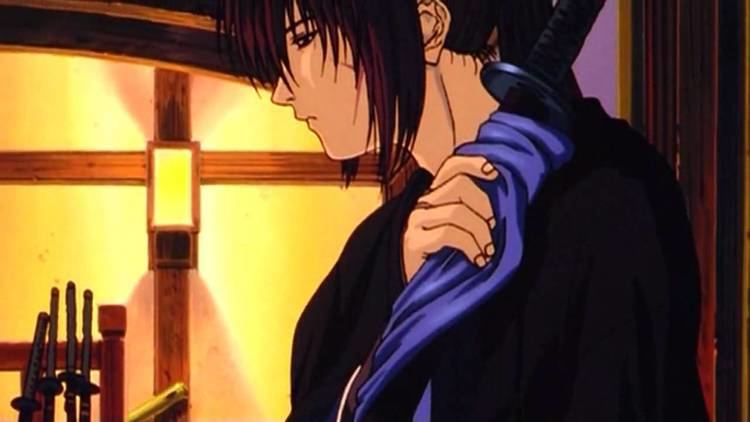
After the Ikedaya affair, Katsura arranges for Kenshin and Tomoe to hide in the village of Otsu as husband and wife, so the two would not be suspected. After a few months, Tomoe's brother Enishi comes to visit and secretly reveals to his sister that the shogunate agents assigned to track down and kill Kenshin are close by, and that her revenge will be complete. Tomoe sends Enishi off, feeling ill at ease. It is here that Tomoe realizes that she has fallen in love with Kenshin. Kenshin, too, is in love with Tomoe. The next morning, Tomoe leaves the house and tries to deceive the shogunate men into giving up their pursuit of Kenshin and unsuccessfully attempts to kill their leader.
After Tomoe's disappearance, Kenshin is visited by a comrade who tells him that the spy was Tomoe and that she is meeting at that moment with her co-conspirators. He also reveals to Kenshin that she is the fiancée of Kiyosato, the man he killed. Kenshin, however, is unaware that it is this man who is the real spy. While heading to Tomoe's location, a heavily-shocked Kenshin faces and kills three of the four shogunate agents but becomes badly injured due to his traumatized state. While Kenshin is fighting with the last agent (a fist fighter), Tomoe steps in between the two to protect Kenshin from the killing punch. This allows Kenshin to kill the agent but, in doing so, unintentionally impales Tomoe also. Before her death, she gives him the second part of his cross-shaped wound.
Kenshin, blaming himself for Tomoe's death, swears to fight to bring about the age desired by Katsura, but after that to continue fighting to protect the innocent without killing again. Katsura informs Kenshin that he had a new assassin kill the real spy. As the Tokugawa shogunate is nearing its end, Kenshin has his first encounter with the Shinsengumi captains Okita Sōji and his future rival, Saitō Hajime. It is then revealed that once the Bakumatsu revolution had ended, the Hitokiri Battōsai had disappeared without a trace. Then Kenshin returns to the graves of the women he buried when he was a child and places Tomoe's scarf on them. Sometime afterwards, Hiko Seijūrō returned to the site and notices the scarf, realizing Kenshin had returned and he had barely missed his former student.
Production
Daryl Surat of Otaku USA stated that this series uses a more "realistic" art style than the television series uses, and that the series has "graphic, bloody violence galore" beginning in the opening sequence.
One of the major themes of Trust is understanding the repercussions and after-effects murder can have, something that Kenshin has yet to comprehend though others have tried to point it out to him.
Reception
Trust & Betrayal's story, animation, art, music and Japanese voice acting have all been heavily praised by various critics and, consequently, the series itself has been widely acknowledged as a masterpiece and one of anime's crowning achievements.
THEM Anime Reviews gave the entire OVA series a perfect score of 5 out of 5 stars, with reviewer Tim Jones stating, "powerful, evocative, saddening, and heavily charged, Rurouni Kenshin: Trust & Betrayal is a series that goes far beyond its comic-book origins, testing the limits of not only its franchise, but the medium of original video animation as a storytelling device. Furthermore, while it surpasses the original television series in many ways, it remains complementary and insightful to why Kenshin becomes the way he is. After all, nothing builds character quite so well as a stirring tragedy. It doesn't get much more tragic or stirring than this." He summarised the series as "dramatic, tragic, beautiful" and "a sterling example of Japanese animation at its finest".
Trust & Betrayal has received significant praise from Anime News Network reviewers. Mike Crandol noted it as one of the greatest OVA series of all time, celebrating the new characters designs as well as the fights scenes which were also noted to be "terribly bloody" and beautiful at the same time. In his review, Carl Kimlinger described the series as "stirring, devastating, smart, redemptive and pure perfection" and gave the series an 'A+' rating for the subbed version and an 'A' rating for the dub. Bamboo Dong claimed that watching this series would benefit the viewer with a "stunning overall experience" before finishing off that "Rurouni Kenshin: Tsuioku Hen is a masterpiece, with dramatic visuals and beautiful animation".
Animerica reviewer Rio Yañez praised Trust's "introspective take on violence" as well as its being "chock-full of insane samurai sword fights and free-flying appendages" while avoiding stereotypical freeze frame animation. While considering the violence "over the top", he felt it was well handled, avoiding being excessive or gratuitous, and that the action scenes were "well balanced by the lavish background paintings and designs". He did criticize ADV Film's English dub as "kung fu style dubbing", noting that the voice actors frequently mispronounced the Japanese names and left the voice track mildly confusing despite the English script's serious take of the material.
To illustrate, DVD Talk reviewer Don Houston found the OVA's story and music solid. The director's cut version received positive comments by how the four OVAs were arranged with Houston commenting it "seems more like a movie that stands alone, rather than just the precursor to a long lasting series."
Daryl Surat of Otaku USA said that, despite what Dave Riley said, viewers should watch the television series before watching Trust & Betrayal. Surat explained that the OVA has "great moments" that a viewer unfamiliar with the television series would not "bat an eye toward."
